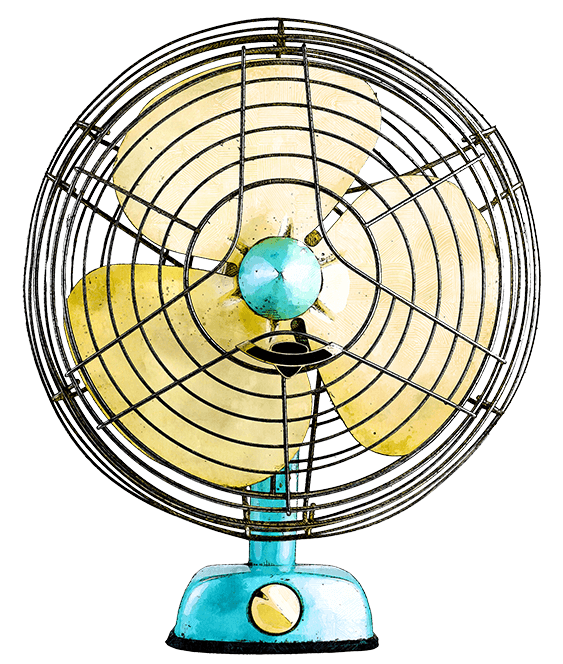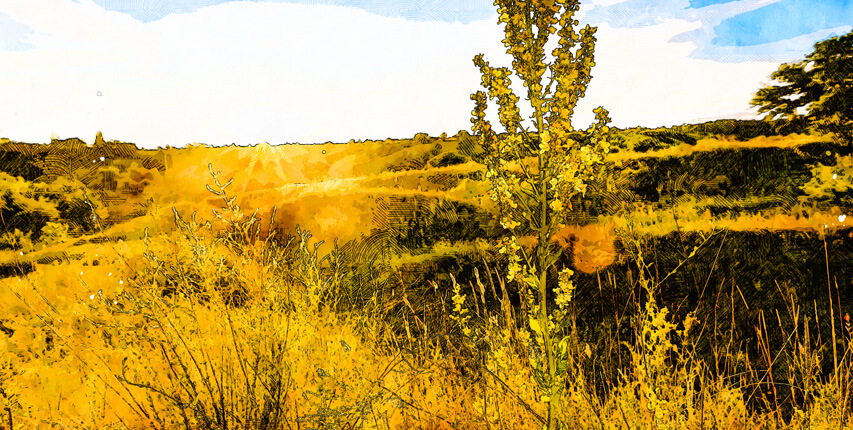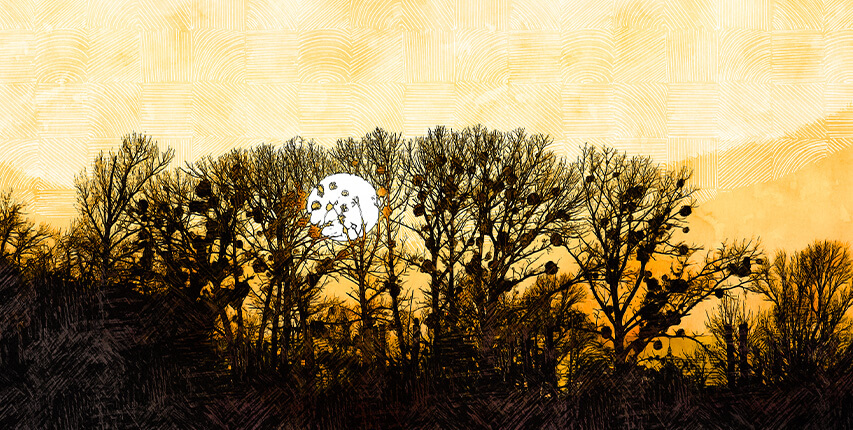Know your UVs, beat the heat, and stay cool
This guide blends sun safety, cooling tips, and curious facts about heat, hydration, and how your body handles the summer sizzle. Smart science, small tricks, and a few surprising insights… because summer’s better when you’re informed.
1.
Popsicles Were Invented by Accident
In 1905, 11-year-old Frank Epperson left a cup of soda with a stirring stick outside overnight. It froze — and the popsicle was born!
When he first started making them for friends and family, he called them “Epsicles” — a mashup of his last name and “icicle.” His children later convinced him to rename it Popsicle because they liked calling it Pop’s sicle.
Frank Epperson filed for a patent for his “frozen confectionery” on a stick in 1923—18 years after his accidental invention. Once patented, Epperson teamed up with the Joe Lowe Company, which sold the frozen treats at amusement parks and helped turn them into a national sensation.
For many years, Popsicle sticks came with printed jokes and riddles — making them a fun surprise even after the treat was gone.
The word Popsicle is a trademarked brand. So while many people use it generically, only Unilever can sell actual Popsicles under that name in the U.S.
Most ceiling fans have a tiny switch on the base. In summer, set it to spin counterclockwise (pushing air down). In winter, clockwise circulation pulls cold air up and redistributes warm air trapped near the ceiling.
A typical fan might use 30–70 watts, while a small window AC unit can use 500–1,500 watts. That makes fans a budget- and eco-friendly helper—when used wisely.
Place a shallow bowl of ice in front of your fan. The moving air picks up the cold moisture from the surface of the ice and gives you a makeshift mini air chiller.
What makes you feel cooler is the increased evaporation of sweat from your skin, which pulls heat away from your body. When the air temperature climbs above body temperature (about 98.6°F / 37°C), fans can start blowing hot air over your skin, which actually adds heat instead of removing it. In extreme heat, fans alone may not be safe.
2.
Fans Don't Actually Cool Air
Fans create a wind-chill effect by moving air across your skin, which helps sweat evaporate — but they don’t lower room temperature.
On a hot day, the average person can sweat up to 1.5 liters per hour. That’s more than a large water bottle—so staying hydrated isn’t just a tip, it’s a necessity.
It’s not the sweat that smells—it’s the bacteria on your skin feeding on the sweat that creates body odor. Different areas of the body produce different kinds of sweat, which is why some spots smell more than others.
Eccrine glands (most common) help regulate temperature and are found all over the body.
Apocrine glands, found in areas like armpits, activate in response to stress or hormones and produce thicker sweat.
When the air is already full of moisture, your sweat can’t evaporate as easily—so your body struggles to cool off. That’s why hot, humid days feel so much more oppressive than dry heat.
Sweat itself isn’t what cools you—it’s the evaporation. As the moisture on your skin turns into vapor, it pulls heat away from your body, cooling you down in the process. It’s physics in action.
3.
Sweating is Your Body's A/C
When sweat evaporates, it takes heat away from your skin. It’s your body’s built-in cooling system.
They’re especially critical for vulnerable populations—including older adults, young children, people with chronic illness, and those experiencing homelessness or living without air conditioning.
Some cities also offer transportation to cooling centers, or expand public transit hours for free, so people can reach them more easily.
Heat-related deaths outnumber those from all other weather events in the U.S., making access to safe, cool spaces a public health priority.
Cooling centers are a form of “heat emergency response.” Cities monitor temperature forecasts and activate these centers when extreme heat alerts are issued—usually when the heat index reaches dangerous levels for multiple days.
4.
Cooling Centers are Lifesavers
During heat waves, many cities open public cooling centers — libraries, schools, or community centers with A/C for people who don’t have it at home.
UV rays are divided into UVA and UVB. UVA rays (which cause skin aging) are especially good at sneaking through clouds and even glass.
Snow, sand, water, and even concrete reflect UV rays, increasing your exposure — so overcast days at the beach can be especially sneaky.
High-altitude places and midday hours intensify UV exposure, regardless of cloud cover.
Dermatologists recommend wearing broad-spectrum sunscreen year-round — and reapplying every 2 hours, even if you’re not sweating or swimming.
Clouds don’t block UV rays — they mostly block visible light. That’s why it might look gray outside, but you can still get sunburned.
5.
You can get a sunburn on a cloudy day
Up to 80% of UV rays can pass through clouds — so sunscreen is still important even when it’s overcast.
Higher SPF doesn’t mean double the protection: * SPF 15 blocks ~93% of UVB rays * SPF 30 blocks ~97% *SPF 50 blocks ~98% *No sunscreen blocks 100%.
Reapply every 2 hours, and more often if swimming or sweating. Sunscreen wears off — even the water-resistant kind.
Most people don’t use enough. A full body application needs about a shot glass full of sunscreen.
There are benefits to sun exposure in moderation:
Your skin produces vitamin D when exposed to UVB rays. This vitamin supports bone health, immune function, and mood regulation. Just 10–30 minutes a few times a week, depending on skin tone and location, can be enough.
Sunlight helps regulate circadian rhythms by triggering serotonin during the day and melatonin at night. This can improve sleep quality and reduce the risk of seasonal affective disorder (SAD) or the “winter blues.”
Some studies suggest sunlight exposure may trigger the release of nitric oxide, which can help lower blood pressure. Psoriasis, eczema, and acne can sometimes improve with carefully monitored sun exposure (often used in medical phototherapy).
SPF is a multiplier, not a timer. SPF 30 means you can stay in the sun 30 times longer than if you wore no protection—in theory. But real life (sweat, water, rubbing) changes that. SPF only measures UVB protection, which are the rays that burn. UVA rays (the ones that age and damage deeper skin layers) aren’t rated by SPF alone—so look for “broad-spectrum” on the label.
6.
Sun Screen SPF Doesn't Mean Time
SPF stands for “Sun Protection Factor” — but it doesn’t mean how many minutes you’re safe. SPF 30 blocks about 97% of UVB rays, not 30 minutes of sun.
The coldest inhabited place is Oymyakon, a village in northeastern Siberia. In winter, it regularly dips below -50°F, and the ground is permanently frozen.
Despite the cold, Oymyakon has a school, homes, and even a local airport that operates in the deep freeze.
The hottest temperature ever recorded on Earth was 134°F (56.7°C) in Furnace Creek, Death Valley, California, in 1913.
In recent years, it hit 130°F (54.4°C) again in 2020 and 2021, which may be the hottest reliably measured temps in modern times. Death Valley’s dry heat is scorching, but its dramatic landscape draws visitors — especially for sunrise and stargazing.
The coldest temperature ever recorded on Earth was -128.6°F (-89.2°C) at Vostok Station, Antarctica, in 1983 — but it’s uninhabited.
The coldest inhabited place is Oymyakon, a village in northeastern Siberia. In winter, it regularly dips below -50°F, and the ground is permanently frozen.
7.
The Coolest Place on Earth Isn’t Antarctica
Antarctica holds the record for coldest temp (-128°F), but the “coolest” inhabited place is Oymyakon, Russia — average winter temps around -58°F!
Aloe was also used in ancient China and India for treating wounds, reducing fever, and calming the skin.
The gel inside the leaves contains compounds like aloin and polysaccharides, which give it its soothing and anti-inflammatory effects.
During World War II, aloe was used on radiation burns from early experimental treatments.
Today, aloe vera is a common ingredient in after-sun care — but it’s also found in drinks, cosmetics, and even pet care products.
Ancient Egyptians revered aloe vera so much they included it in burial rituals. They believed it had protective powers and called it the “plant of immortality.”
8.
Aloe Vera Isn’t Just Soothing — It’s Ancient
Aloe vera has been used for over 6,000 years. Ancient Egyptians called it “the plant of immortality” and used it for sunburns and cooling relief.
Some modern fabrics go even further with reflective materials—like UV-reflective threads or metallic coatings that bounce sunlight away even more effectively than traditional white fabric.
But it’s not just color: weave and breathability play a big role. Loose, light fabrics like cotton, linen, and moisture-wicking blends allow airflow and help sweat evaporate.
Interestingly, desert dwellers often wear black robes—not to trap heat, but to create airflow between fabric and skin. It’s all about how the clothes are worn and how air moves through them.
Bottom line? Color, fabric, fit, and reflectivity all work together to keep you cool in the heat.
Dark colors absorb more visible light, converting it into heat — which is why you can feel the difference under the sun.
Light-colored clothing reflects more sunlight, which helps reduce heat absorption and keeps your body cooler.
9.
White and Light Colors Reflect Heat
Dark clothes absorb sunlight, while light-colored clothing reflects it — which is why summer outfits are often white or pastel.
Pediatricians recommend shoes for kids at the beach or park—because play areas can cause second-degree burns.
If it’s too hot for your hand, it’s too hot for paws — check the ground before a summer walk!
It’s technically possible to fry an egg on the pavement—but only under the right conditions. You’d need temps of around 158°F and a dark surface (like black asphalt or a metal pan on pavement). In most places, it’ll cook very slowly or not fully at all… but the myth lives on!
The surface temperature of black asphalt can be 40–60°F hotter than the air.
10.
Pavement Gets Dangerously Hot
On a sunny day, asphalt and concrete can heat up to 140–160°F, even if the air is only 85–90°F. That’s hot enough to burn bare feet or paws in seconds!
Bonus Beat the Heat Trivia!
Before fans and freon, there was design and desert wisdom.
Long before modern air conditioning, people around the world beat the heat with clever design, architecture, and a deep understanding of airflow, shade, and insulation. From ancient innovations to 19th-century ingenuity, here’s how homes kept their cool:
In ancient Persia, wind catchers (called badgirs) rose like chimneys above rooftops, channeling passing breezes down into homes and pushing warm air out.
Greek & Egyptian Whitewash: Buildings painted white reflected sunlight and absorbed less heat, helping keep interiors cooler in intense sun.
Roman Aqueduct Floors: Wealthy Romans piped water under floors (hypocausts) — not just for warmth, but sometimes cool water was used to lower temperatures.
Spanish & Moorish Courtyards: Central patios shaded by walls on all sides created cooler interior gathering spaces with airflow and fountains.
Later Cooling Features (1700s–1800s):
Charleston’s Sideways Homes: Built with the narrow side facing the street, homes in Charleston, SC had piazzas (porches) running the length of the house to capture breezes and offer shade.
High Ceilings: Especially in Southern U.S. architecture, tall ceilings let hot air rise above head level and enhanced airflow. Combined with large windows and transoms, they turned homes into natural ventilation systems.
Shuttered Windows & Louvered Doors: Controlled sunlight and airflow while maintaining privacy — a low-tech way to manage internal climate.
Ice Houses & Spring Houses: For food storage, early Americans used thick-walled ice houses (sometimes storing blocks cut in winter) and spring houses built over cold water sources to keep perishables cool.
In Charleston, many historic homes sit atop arched foundations called arcades. These elegant structures help guard against flooding and allow air to circulate underneath, offering a natural cooling effect in the heat of summer.
Vocabulary
* Transom – a small horizontal window located above a door or another window—often used to let in extra light or air.
In older homes, especially in warm climates like Charleston, transoms served a practical cooling purpose:
When open, they allowed hot air to escape through the top of a room.
They also enabled cross-ventilation, especially in hallways, by letting air pass through even when doors were closed for privacy.
Some transoms are decorative today, but in traditional design, they were a clever, built-in way to help regulate indoor temperature.
* Hypocausts – an ancient Roman underfloor heating system.
Hypocausts work by circulating hot air and smoke from a furnace through a series of spaces beneath the floor and within the walls.
These systems were commonly used in Roman baths and wealthy homes, making them one of the earliest forms of central heating.
Fun fact: While it was designed for warmth, in some climates the same architectural principle helped with air movement and ventilation, indirectly contributing to cooling when adjusted properly.
* Arcade – a series of arches supported by columns or piers—originally an architectural feature seen in ancient Roman design. In Charleston, these arched foundations often support the raised first floors of historic homes.
Arcades provide both structural support and protection from flooding in coastal areas. The open arches allow air to circulate beneath the home, helping to naturally cool the interior. Their shaded spaces also offered relief from the sun and a transitional area between indoors and out.
Charleston’s arcades combined form and function—elevating homes for practicality while adding graceful rhythm to the city’s architectural charm.
* Piazza – an Italian word for a public square or open space—but in Charleston, South Carolina, the term refers to a covered side porch, often stretching the length of a house.
These piazzas are typically two stories and built on the shaded side of the house to catch breezes and stay cool.
They often run perpendicular to the street, which is why many Charleston homes appear “sideways.”
Piazzas were a key part of passive cooling strategies in hot, humid Southern climates, blending elegance with environmental function.
Brain Fog Forecast: 100° and Rising
When you’re overheated, your brain can slow down — causing mental fatigue, fuzzy thinking, and even more mistakes.
In hot environments, your body shifts energy toward cooling itself—diverting blood from the brain to the skin, which can impair concentration.
Studies show cognitive performance—especially memory, attention, and reaction time—declines as temperature rises.
During heat waves, people report increased irritability, disrupted sleep, and slower decision-making.
Studies show cognitive performance—especially memory, attention, and reaction time—declines as temperature rises.
Some school districts and workplaces now monitor indoor heat levels, recognizing how temperature affects mental function.
Why Heat Zaps Your Energy
Your body works overtime to cool down:
When it’s hot, your body diverts energy to regulate temperature — increasing blood flow to the skin and ramping up sweat production. This takes effort and resources, which leaves you feeling tired.
You lose fluids and electrolytes:
Sweating leads to dehydration and electrolyte loss, which can cause fatigue, dizziness, and muscle weakness — even if you’ve been doing nothing physically intense.
Poor sleep quality:
Hot environments disrupt sleep, especially deep sleep, leading to lower energy the next day.
Reduced appetite:
People tend to eat less when it’s hot, which means fewer calories and nutrients — another contributor to sluggishness.
Mental exhaustion:
As you already explored, heat impairs cognitive function. But mental fatigue can feel just as draining as physical tiredness.
Test Your Knowledge!
Beat the Heat Trivia
A fun, fast-paced quiz to test and see what you can recall about the fun facts above! Try quick mode for a fast challenge or take the full quiz to see how much you really know!



